Sigiriya travel - Sri Lanka, Asia
Sigiriya, an iconic ancient rock fortress, is located in the Central Province of Sri Lanka, approximately 170 kilometers northeast of Colombo. This UNESCO World Heritage site is one of the country's most famous historical attractions, known for its impressive ancient engineering and unique cultural significance. Sigiriya's origins date back to the 3rd century BC when it served as a Buddhist monastery, but it was transformed into a fortified city and palace complex by King Kashyapa in the 5th century AD. After Kashyapa's reign, it reverted to a monastery until the 14th century.
Visitors are drawn to Sigiriya’s striking Lion Rock, a 200-meter-high natural formation that houses the ruins of a royal palace at its summit. The site is renowned for its elaborate water gardens, ancient frescoes of the "Heavenly Maidens," and the iconic Lion’s Paw entrance, which leads to the final ascent. The Mirror Wall, once polished to reflect the viewer’s image, is another fascinating feature.
Population: Approximately 50,000 in 2024.
Economy: Sigiriya’s economy is largely driven by tourism, offering travelers a range of affordable local experiences. The Sigiriya Craft Village is a must-visit for those looking to purchase traditional handicrafts, art, and souvenirs at reasonable prices. Nearby, the Dambulla Produce Market is the largest fruit and vegetable market on the island, where visitors can find fresh local produce. Dining in Sigiriya is budget-friendly, with popular options like Chooti Restaurant and Gamagedara Village Food serving traditional Sri Lankan cuisine. Visitors can also enjoy street food such as savory and sweet rotis at very affordable prices. For activities, the entrance to the Sigiriya Rock Fortress is around $30, which includes access to the museum.
Landmarks: Sigiriya Rock Fortress, Pidurangala Rock, Dambulla Cave Temple, Sigiriya Museum, Lion's Paws (Lion's Gate), Minneriya National Park, Royal Gardens
Sri Lanka
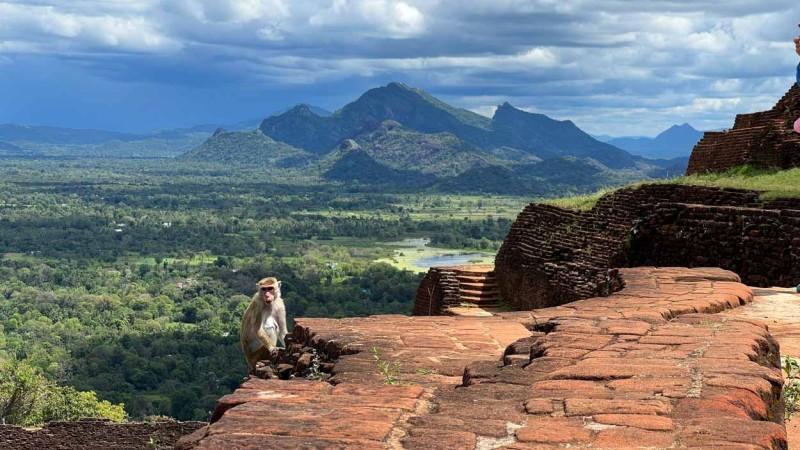
Overview of Sigiriya
History & Cultural Influence
Sigiriya’s history is a rich tapestry of ancient significance and cultural influence, dating back to the 3rd century BC when it served as a Buddhist monastery. Its transformation came in the 5th century AD when King Kashyapa I constructed a fortified city atop the towering 200-meter rock, complete with a palace, intricate water gardens, and a sophisticated hydraulic system. This royal fortress became a symbol of both architectural and engineering brilliance, showcasing the artistic achievements of the time, including the famous frescoes known as the "Heavenly Maidens." After Kashyapa’s reign, Sigiriya reverted to its role as a Buddhist monastery until the 14th century.
Today, Sigiriya stands as a UNESCO World Heritage Site, celebrated globally as one of Sri Lanka’s greatest cultural treasures and often referred to as the "Eighth Wonder of the World." The site’s artistic and engineering marvels have influenced Sri Lankan art and urban planning, while ongoing archaeological studies continue to reveal insights into ancient civilizations. Sigiriya is also steeped in legend, with local lore connecting it to the mythological King Ravana, further enhancing its cultural mystique. The site's conservation efforts highlight the importance of preserving this heritage for future generations.
Interaction with The Locals
When visiting Sigiriya, tourists will primarily interact with the local Sinhalese population, who make up the majority of the region's demographic. The population in Sri Lanka is 74.9% being Sinhalese, followed by Sri Lankan Tamils and Moors. Language is not a barrier as Sinhala is widely spoken, but English is also common, especially in tourist areas.
You can expect a warm welcome as Sri Lankans are known for their hospitality. Many locals, especially around Sigiriya, take pride in its historical and cultural significance and are often eager to share stories or offer services related to tourism. Tourism is a key contributor to the local economy, and visitors will likely encounter guides, vendors, and small businesses that rely on tourist engagement. Respect for cultural and religious customs, particularly around Buddhist sites, is important to the locals, so being mindful of etiquette will enhance interactions with the community.
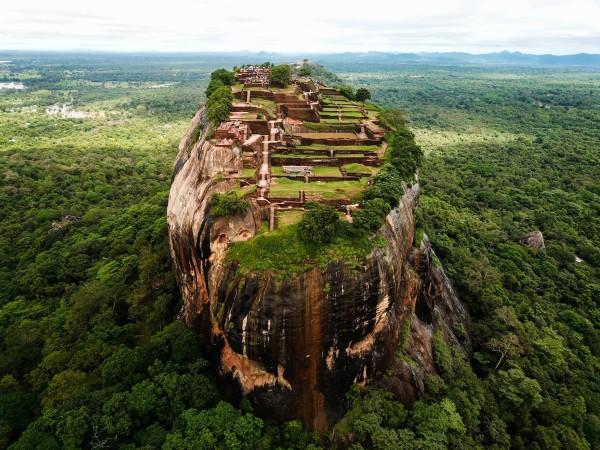
Sigiriya Rock Fortress - © gather
Top Attractions in Sigiriya
Sigiriya offers travelers a unique blend of history, culture, and natural beauty. The iconic Sigiriya Rock Fortress, a UNESCO World Heritage site, captivates visitors with its ancient palace ruins, intricate frescoes, and breathtaking views from the summit. Nearby, Pidurangala Rock provides a scenic hiking alternative, while Minneriya National Park attracts wildlife enthusiasts with its famous elephant gatherings.
Sigiriya Rock Fortress
Location: Central Province, Sri Lanka, about 170 km northeast of Colombo
This UNESCO World Heritage site stands as one of Sri Lanka's most iconic landmarks. Rising 200 meters above the surrounding plains, the Sigiriya Rock Fortress dates back to the 5th century CE and once served as King Kashyapa’s royal palace. The site is famous for its ancient frescoes, the Lion’s Paw entrance, and intricate water gardens that reflect the advanced engineering skills of ancient Sri Lankans. Visitors can explore the ruins of the palace at the summit while taking in breathtaking views of the surrounding landscape.
Pidurangala Rock
Location: About 1 km north of Sigiriya Rock
For those seeking a less crowded but equally rewarding experience, Pidurangala Rock offers panoramic views, including a perfect vantage point of Sigiriya Rock itself. The climb to the top is challenging but shorter than Sigiriya, and the site also features an ancient cave temple with Buddha statues. The view from the summit during sunrise is particularly stunning.
Minneriya National Park
Location: About 30 km east of Sigiriya
Minneriya National Park is renowned for its large gatherings of wild elephants, particularly during the dry season. These gatherings, known as "The Gathering," attract elephants from across the region to the Minneriya Tank, an ancient reservoir. Visitors can also spot a variety of bird species and other wildlife, making it a must-visit for nature and wildlife enthusiasts.
Sigiriya Museum
Location: At the base of Sigiriya Rock
Opened in 2009, the Sigiriya Museum offers a deeper understanding of the history and significance of the fortress. Exhibits include artifacts excavated from the site, scale models of the fortress, and replicas of the famed frescoes. Informative displays and videos provide context about the construction of Sigiriya and its role in Sri Lankan history.
Dambulla Cave Temple
Location: About 20 km southwest of Sigiriya
Also known as the Golden Temple of Dambulla, this UNESCO World Heritage site is the largest and best-preserved cave temple complex in Sri Lanka. The temple is home to over 150 Buddha statues and stunning mural paintings that date back over 2,000 years. It offers a serene atmosphere and insight into the rich Buddhist heritage of the region.
Royal Gardens
Location: At the base of Sigiriya Rock
The Royal Gardens at the base of Sigiriya are a testament to ancient Sri Lankan engineering and urban planning. Featuring terraced gardens, water fountains, and pools, the gardens were part of an elaborate hydraulic system that still functions today during the rainy season. These gardens provide a glimpse into the luxurious lifestyle of the ancient royal court.
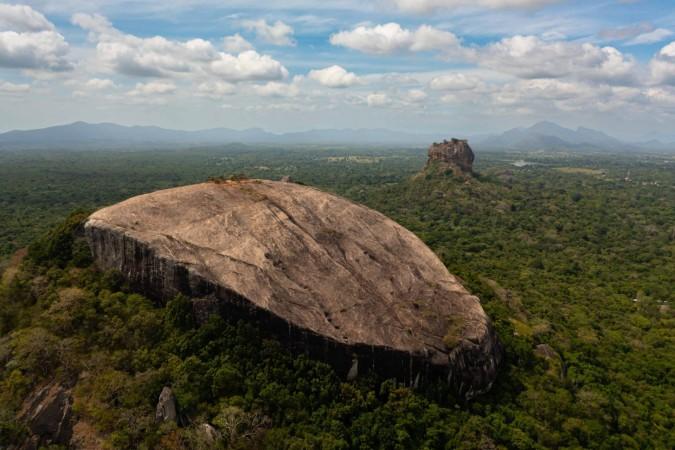
Pidurangala Rock - © gather
Must-Try Dishes in Sigiriya
When exploring Sigiriya, be sure to indulge in some must-try Sri Lankan dishes. Rice and curry, a local favorite, features a variety of flavorful curries made with fresh vegetables and spices. Kottu Roti, a beloved street food, combines chopped roti with vegetables, eggs, and meat, offering a hearty and delicious meal. Don’t forget to try hoppers, the famous bowl-shaped rice pancakes, which are a staple in Sri Lankan dining.
Rice and Curry
A staple of Sri Lankan cuisine, rice and curry is a must-try dish when visiting Sigiriya. It’s typically served with a variety of flavorful curries, including dhal (lentil), spicy chicken or fish, and seasonal vegetables. Each meal is a celebration of Sri Lanka’s rich agricultural tradition, often featuring locally sourced spices and fresh produce.
Kottu Roti
A crowd-favorite street food, Kottu Roti is made by chopping up flatbread (roti) and stir-frying it with vegetables, eggs, and either chicken, beef, or seafood. The dish is cooked on a hot griddle, creating a rhythmic sound that’s almost as iconic as its bold, savory flavors.
Hoppers (Aappa)
These bowl-shaped pancakes made from fermented rice flour and coconut milk are a breakfast staple in Sigiriya. Hoppers can be enjoyed plain, or with an egg cooked into the center for an extra treat. The crispy edges and soft center make them a delicious and versatile dish that pairs well with spicy sambols or curries.
String Hoppers (Idiyappam)
A traditional Sri Lankan delicacy, string hoppers are thin rice flour noodles steamed into small, lacy circles. Usually served with a side of coconut sambol or curry, they provide a light yet satisfying meal that highlights Sri Lanka’s rice-centric food culture.
Rotis
Rotis in Sigiriya come in both savory and sweet versions. The savory variety can be stuffed with spiced vegetables or meats, while the sweet versions are often filled with coconut, chocolate, or fruit. Whether as a quick snack or a hearty meal, rotis are a beloved street food offering something for everyone.

Kottu Roti - © gather
Weather in Sigiriya: Best Time to Visit
Average Temperatures
Daytime highs range from 28°C (82°F) in December and January to around 32°C (90°F) in March, April, and May. Nighttime lows vary from 20-21°C (68-70°F) in January and February, reaching up to 24°C (75°F) in May and June. Overall, the average temperature year-round is approximately 27.68°C (81.82°F).
Rainfall
The wettest months are between October and December. The driest period falls between May and September. October typically sees the most rain, with an average of 214mm, while June experiences the least, around 15mm.
Best Time to Travel
December to April marks the dry season, providing ideal weather for sightseeing. May to September also sees relatively low rainfall. Expect higher tourist volumes from December to April, which is the peak season for visitors.
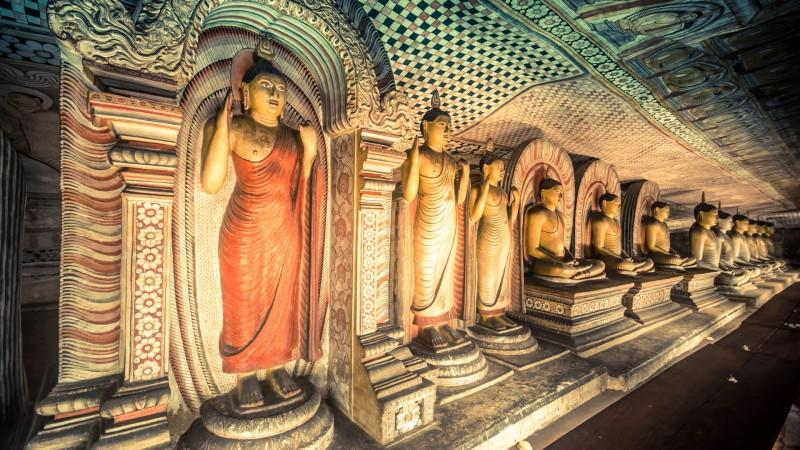
Dambulla Cave Temple - © andbeyond
Festivals & Local Celebrations
Sinhala and Tamil New Year
Time of year: Mid-April (usually the 13th or 14th)
Experience the vibrant energy of one of Sri Lanka’s biggest festivals, the Sinhala and Tamil New Year. In Sigiriya, visitors can immerse themselves in a festive atmosphere as the entire country celebrates this cultural milestone. You’ll witness locals preparing traditional New Year treats and sweets, participating in fun games and competitions, and taking part in the annual custom of house cleaning. The streets come alive with firecrackers and joyful celebrations, as people of all faiths come together in a beautiful spirit of unity and togetherness.
Vesak Poya
Time of year: May (full moon day)
Vesak Poya is a deeply spiritual Buddhist festival, honoring the birth, enlightenment, and passing of Lord Buddha. During this time, Sigiriya becomes a serene and reflective place, with temples and homes adorned in colorful lanterns and lights. Visitors can participate in processions, prayers, and acts of kindness, such as giving alms to the less fortunate. The calm and peaceful atmosphere makes this festival a truly special experience for travelers seeking spiritual enrichment.
Poson Festival
Time of year: June (full moon day)
While mainly celebrated in places like Anuradhapura, the Poson Festival’s influence can also be felt in Sigiriya. This festival marks the arrival of Buddhism in Sri Lanka, and you’ll find the town decorated with beautiful lanterns and illuminated "thorana" displays. Food stalls line the streets, offering local delicacies, while Buddhist disciples, dressed in white, partake in religious rituals. It’s a time for reflection and appreciation of Sri Lanka’s rich Buddhist heritage, and visitors can enjoy the peaceful yet festive ambiance.
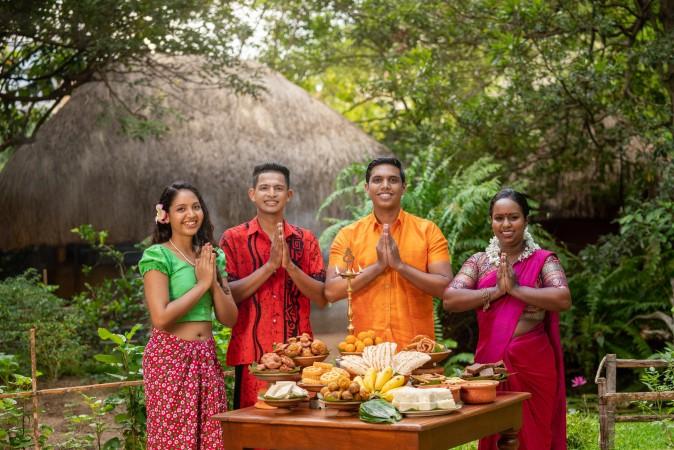
Sinhala and Tamil New Year - © gather
Culture Etiquette in Sigiriya
Dress Code
When visiting religious sites like temples, dress modestly to respect local customs. Be sure to cover your shoulders and knees, and always remove shoes and hats before entering temples or homes.
Greetings and Interactions
The traditional greeting in Sri Lanka is "Ayubowan," meaning "long life," often accompanied by palms joined together. It's important to show respect to elders and avoid public displays of affection between men and women. In most cases, men and women don't touch in public, so refrain from shaking hands unless it's initiated.
Body Language
Avoid pointing with your index finger; instead, use your chin or an open palm. The top of the head is considered sacred, especially for children, so avoid touching anyone's head. Likewise, don’t use your feet to point at people or objects, as feet are regarded as unclean.
Religious Etiquette
Women should not touch or sit next to Buddhist monks. When visiting temples, avoid turning your back to Buddha statues, especially when taking photos. Refrain from wearing clothing that features images of Buddha or Hindu gods.
Eating and Drinking
It's customary to wash your hands before and after meals, and always use your right hand for eating or passing items. If offered refreshments, it’s polite to accept them as a gesture of hospitality.
Photography
Always ask for permission before photographing people or religious sites. Some locations may require a permit for photography, so be mindful of local rules.
Gift Giving
If invited to someone's home, it’s thoughtful to bring a small gift. However, avoid using black or white wrapping paper, as these colors are associated with mourning in Sri Lankan culture.
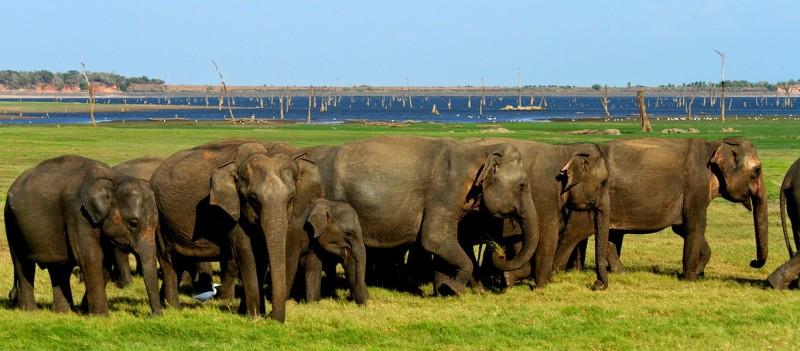
Minneriya National Park - © minneriyasafari
Essential Travel Information
Getting to Sigiriya
By Bus:
Reaching Sigiriya by bus typically involves a transfer. Since Sigiriya is off the main A6 highway, you'll need to first take a bus to Dambulla, which acts as the main transport hub. From there, buses depart every hour to Sigiriya for around 100 LKR. If you're traveling from cities like Kandy, Colombo, or Trincomalee, you'll first head to Dambulla before catching a local bus to Sigiriya.
By Taxi/Private Car:
For a more convenient but pricier option, taxis and private cars can be arranged from major cities or airports. Hotels and travel agencies often provide assistance in booking these transfers.
Airport Transfers:
Sigiriya is located about 165 km from Bandaranaike International Airport in Colombo. Private taxis are available for airport transfers, taking approximately 4-5 hours.
Getting Around Sigiriya
Tuk-tuks
Tuk-tuks are the go-to for short trips and are both affordable and convenient. Remember to negotiate the fare beforehand, with rides from Dambulla to Sigiriya typically costing around 2000 LKR (about $7).
Local Buses
Buses are available for budget-friendly travel to nearby towns and attractions, though service can be infrequent.
Taxis
For longer trips or full-day tours, taxis are readily available. Make sure to agree on a fare before starting your journey.
Ride-hailing Services
You may find apps like PickMe or Uber in the area, offering a more transparent pricing structure.
Walking and Bicycle Rentals
Sigiriya town is small, and many attractions are within walking distance. Some guesthouses offer bicycle rentals, providing a great way to explore the surrounding areas at your own pace.
ATM and Banking Services
ATM Availability
While ATMs can be found in Sigiriya, they are not as abundant as in larger cities. There is a Bank of Ceylon ATM located near the Sigiriya ticket office, but its functionality can be inconsistent.
ATM Usage
Most ATMs in Sigiriya accept major international cards like Visa, MasterCard, and AmEx. Transaction fees typically range from 200 to 300 LKR, with daily withdrawal limits between 40,000 and 60,000 LKR.
Banks
Though major banks like Commercial Bank of Ceylon, People’s Bank, and international options such as HSBC and Standard Chartered operate in Sri Lanka, they may not have branches directly in Sigiriya. However, you’ll find them in nearby larger towns.
Currency Exchange
Currency exchange services are available in nearby towns, making it wise to carry some cash in USD or EUR for easy exchange.
Credit Cards
Credit cards are widely accepted at hotels and larger restaurants. To avoid unfavorable exchange rates, always opt to pay in the local currency, LKR.
Accommodation Choices
Luxury Options
Hotel Sigiriya: A top-rated five-star hotel featuring modern amenities, an on-site restaurant, and a stunning pool with views of Sigiriya Rock Fortress.
Mid-range Hotels
A variety of mid-range hotels cater to tourists in Sigiriya, offering comfortable stays with easy access to attractions.
Budget Options
One Night Hostel: Located about 1km from Sigiriya and 2km from Pidurangala, this budget-friendly hostel offers air-conditioned dorms at around 1,500 LKR ($8 USD) per night.
Location Considerations
Many accommodations are conveniently situated just a few kilometers from key attractions like Sigiriya Rock Fortress and Pidurangala, providing easy access for sightseeing.
Booking
During peak tourist seasons, it’s advisable to book your stay in advance. Many accommodations in the area can be reserved through popular international booking platforms.
Articles for you

Explore Yala National Park - Sri Lanka Travel, Asia
Tucked away in Sri Lanka’s southeastern corner, Yala National Park is where wild nature meets deep tradition. Known worldwide for its leopard population, the park is also home to elephants, sloth bears, crocodiles, and hundreds of bird species. Beyond wildlife, Yala opens doors to a cultural landscape dotted with ancient temples, Buddhist ruins, and coastal villages. For travelers seeking more than just a safari, Yala offers a chance to explore eco-tourism, local communities, and sacred heritage sites.
Population: The Yala National Park area doesn’t have a human population.
Economy: The economy around Yala National Park thrives on a blend of eco-tourism, agriculture, and local services. Safari tours, eco-lodges, and cultural experiences drive steady income for nearby towns like Tissamaharama and Kataragama, supporting thousands of families.
Landmarks: Famous for Block I of Yala and wildlife encounters, including elephants, sloth bears, crocodiles, and exotic bird species.

Explore Galle - Sri Lanka Travel, Asia
Nestled on Sri Lanka’s southern coastline, Galle is a vibrant city where history meets the sea. Its cobbled streets, colonial architecture, and serene beaches make it a must-visit destination for travelers seeking a blend of culture, adventure, and relaxation. A UNESCO World Heritage site, Galle captivates visitors with its Dutch Fort, bustling markets, and friendly locals. Whether you’re exploring the ramparts at sunset or savoring fresh seafood by the shore, Galle promises an unforgettable journey into Sri Lanka’s heritage.
Population: Approximately 113,000 in 2023.
Economy: Galle’s economy thrives on tourism, trade, and fisheries. The city’s historic fort, colonial architecture, and coastal charm draw thousands of international visitors each year, making tourism its main economic driver. Fishing remains vital for local livelihoods, supplying fresh seafood across the region.
Landmarks: Famous for the Galle Fort, Dutch Reformed Church & Maritime Museum, and Unawatuna Beach.

Explore Bentota - Sri Lanka Travel, Asia
Nestled along Sri Lanka’s southwestern coast, Bentota is a tropical paradise that blends golden beaches, vibrant culture, and thrilling adventures. Famous for its calm waters, luxury resorts, and scenic river estuary, Bentota has become a top destination for travelers seeking both relaxation and authentic experiences. From serene beach walks at sunrise to adrenaline-pumping water sports, this coastal town offers a perfect balance of leisure and exploration. With its proximity to Colombo and Galle, Bentota is easy to reach, making it an ideal stop for both short escapes and extended holidays.
Population: Approximately 37,000 in 2023.
Economy: Bentota’s economy thrives mainly on tourism, which drives local businesses such as hotels, restaurants, and wellness retreats. The town also benefits from fishing, coconut cultivation, and handicrafts like wood carving and batik textiles. Many residents rely on the growing demand for water sports and Ayurvedic treatments, making tourism the backbone of both income and employment in the area.
Landmarks: Famous for Bentota Beach, Bentota River Safari, and Kande Vihara Temple.

Explore Mirissa - Sri Lanka Travel, Asia
Mirissa is a charming coastal town on Sri Lanka’s southern shoreline. Known for its golden beaches, turquoise waters, and vibrant marine life, it has become a must-visit stop for travelers exploring the island. Many come for whale watching, surfing, and sunset views at Coconut Tree Hill, but Mirissa offers much more than postcard beauty. The fishing boats you see anchored by the bay carry generations of stories. Local traditions, delicious cuisine, and a laid-back rhythm of life shape every visitor’s experience.
Population: Approximately 4,700 in 2023.
Economy: Mirissa’s economy is largely shaped by its coastal location. Fishing has long been the backbone of local livelihoods, with generations relying on the Indian Ocean for income. In recent decades, tourism has become the main driver of growth, thanks to whale watching, surfing, and beachside hospitality.
Landmarks: Famous for Mirissa Beach, Coconut Tree Hill, and Parrot Rock Bridge.

Explore Nuwara Eliya - Sri Lanka Travel, Asia
Tucked away in the Central Highlands of Sri Lanka, Nuwara Eliya is often called “Little England”. With its rolling tea plantations, cool misty mornings, and colonial charm, this mountain town feels like a step into another world. Travelers come here to breathe fresh air, walk through flower gardens, sip the finest Ceylon Tea, and enjoy a pace of life far from the island’s busy cities. Whether you’re drawn by scenic landscapes, heritage architecture, or the warmth of its people, Nuwara Eliya is a destination that blends nature, culture, and history in perfect harmony.
Population: Approximately 781,000 in 2023.
Economy: Nuwara Eliya’s economy thrives mainly on tea production, as it sits in the heart of Sri Lanka’s central highlands, famous worldwide for Ceylon Tea. The city also benefits from a growing tourism industry, attracting visitors with its colonial charm, cool climate, and scenic landscapes.
Landmarks: Famous for Gregory Lake, Hakgala Botanical Garden, and Victoria Park.

Explore Sukau - Malaysia Travel, Asia
Nestled on the banks of the Kinabatangan River in Sabah, Malaysian Borneo, Sukau is a destination where wildlife, culture, and conservation come together. Known as one of Asia’s top spots for river safaris and eco-tourism, this quiet village offers a front-row seat to encounters with Bornean orangutans, pygmy elephants, proboscis monkeys, and exotic birdlife.
Population: Approximately 1,400 in 2019.
Economy: Sukau’s economy is shaped by its riverine location and natural resources. Traditionally, the Orang Sungai community relied on fishing, small-scale farming, and forest gathering for their livelihood. Today, the village has shifted toward eco-tourism, with river cruises, jungle trekking, and homestays providing income.
Landmarks: Famous for the Kinabatangan River cruises, Gomantong Caves, and Ox-bow lakes and wetlands.
